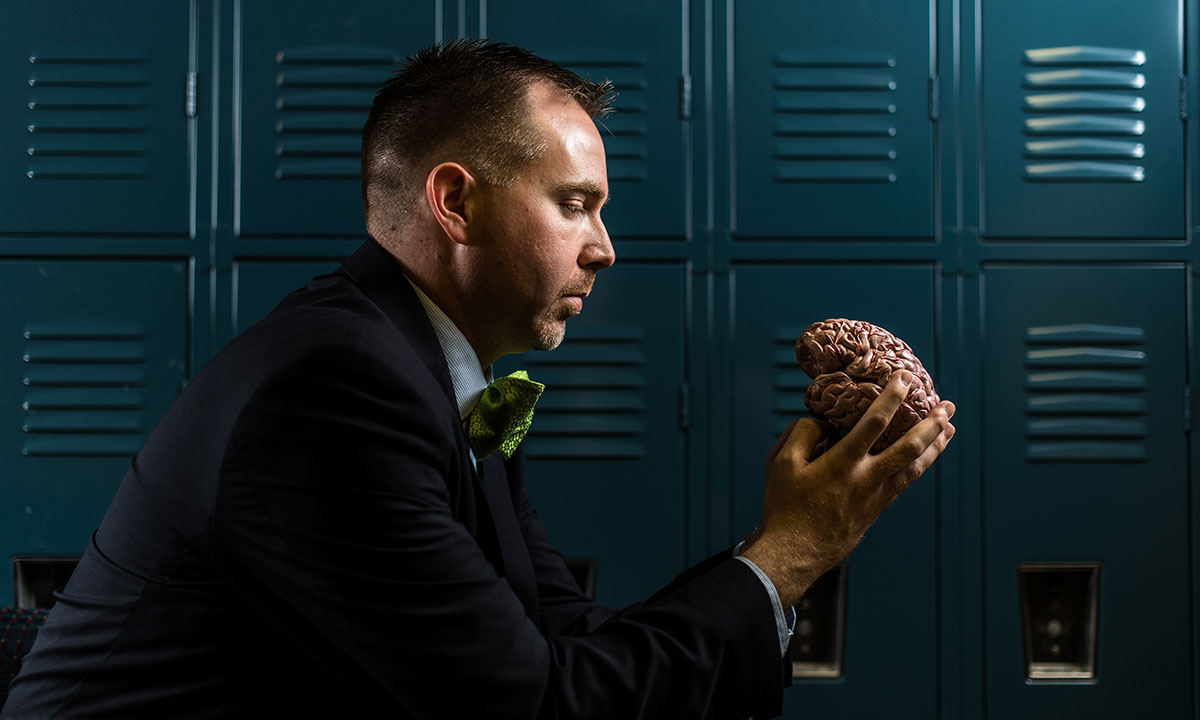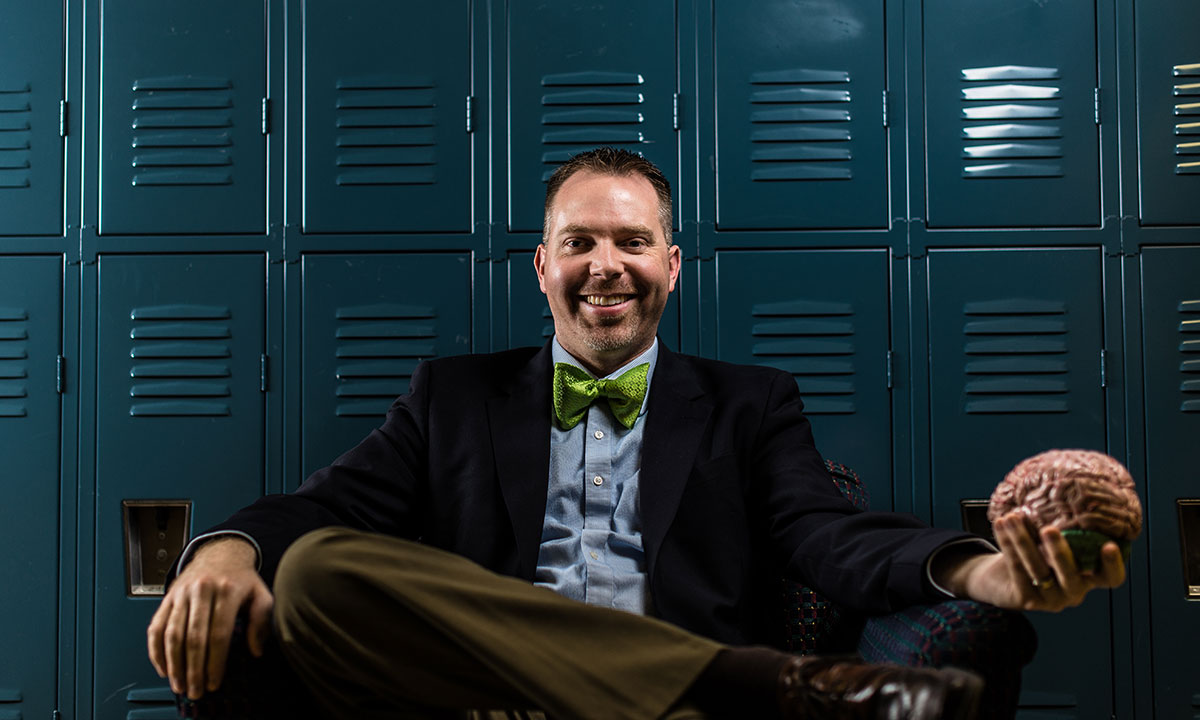Brain trust: Who researches to improve education?
News
To borrow from brain terminology, the work of Dr. John Almarode can be likened to the synapse, that small distance between brain cells, which is critical to the amazing chemical and electrical process that is the main method of communication in our brains.
As an educational neuroscientist, Almarode’s role is to bridge the “cells” of brain science and education.
“My goal is to focus on how we best develop environments that optimize K-12 learning in science, technology, engineering and math. The foundation for that is brain science. That’s the mantra I operate under,” said the assistant professor of early, elementary and reading education at James Madison University.
“What I do is take the body of neuroscience and make sure I have credible, reliable colleagues and sources on brain science,” Almarode said. “And then I try to figure out what, if anything, might apply to the K-12 classroom.”
While he does not engage in bench-level neuroscience work, Almarode depends on the expertise of specialists who conduct research with live or dead brains. He deeply studies their findings, asks follow-up questions of them and, when invited, observes in their laboratories.
With responsibility to translate accurately the work of neuroscientists and to contribute their own research from the realm of pedagogy, Almarode and other educational neuroscientists serve as important researchers in improving student learning. “I would describe my work as figuring out what might provide some insight – such as research in the memory and learning process and the role environments play on brain development – into how we might structure our classrooms and schools.”
“What I do is take the body of neuroscience and make sure I have credible, reliable colleagues and sources on brain science. And then I try to figure out what, if anything, might apply to the K-12 classroom.” — John AlmarodeAlmarode’s expertise in the field is well respected. So much so that he was invited to present sessions and lead preconference workshops at two Learning & the Brain conferences – one in November 2013 and one May 8-10. At the earlier conference, Almarode concentrated on the cognitive and brain components of engagement and how teachers foster that engagement in their classrooms and STEM engagement for K-6 classes at the earlier conference.
The next meeting, the 38th International Learning & the Brain Conference in New York City, focusing on “The Science of Smarter Minds: Teaching to Think, Create and Innovate for School and Careers,” featured Almarode presenting “Engaging Deeper Thinking in Math and Science,” and a pre-conference workshop on “Engaging Adolescent Minds: How They Think, Reason and Learn.”

Almarode draws from a lifetime affiliation with educators and an early interest in science to achieve the professional reputation necessary for invitation to Learning & the Brain conferences. He is the son of teachers and the beneficiary of excellent teaching from “the fabulous science and math teachers whose classes I had the privilege of attending from sixth grade to twelfth grade,” as he writes in “Captivate, Activate, and Invigorate the Student Brain in Science and Math, Grades 6-12,” a 2013 book he co-wrote with Ann M. Miller of Waynesboro, Va., Public Schools. He is also the co-author of the 2013 study, “Future of Education for STEM Talented Adolescents.”
After teaching at Stuarts Draft High School and the Shenandoah Valley Governor’s School, Almarode continued preparing for his role as an educational neuroscientist, earning a Ph.D. in science education at the University of Virginia.
Combining classroom teaching experience and a strong educational program, Almarode shares his expertise in methods classes filled with JMU students who are a year and a half away from teaching in their own classrooms. This “coolest part” of his JMU responsibilities is paired with an extensive schedule of providing professional development sessions for teachers and administrators in various school districts, both locally and internationally.
With all his fellow educators, Almarode urges them to ask, “What does the research say? What does the research say works and doesn’t work? Who does it work for? What do you need to know as a teacher to make that decision?”
The understanding of attentional limitations is an important matter for all educators, one that stems from brain research.
As Almarode explained, “There are certain structures and characteristics that limit how long we can pay attention and limit how much information we can take in one given setting. On average, we can handle about 10 to 12 minutes of new information or three to four chunks of information before we need to come up for air. So the immediate implication is we need to take a 90-minute block and start to chunk it down into 10-minute segments.”
That “break” does not mean the teacher needs to stop instruction, Almarode clarified. A well-prepared teacher knows to stop lecturing and to ask her students to break up into pairs to share with each other what was just presented, for instance. In adjusting the activity, the teacher has given the students the needed attention break while keeping the lesson flowing.
Almarode’s contributions to the education of teachers preparing to lead their own classrooms, as well as those already in the profession, are important because, as he says, “Teaching is about so much more than just knowing the material.”
# # #

